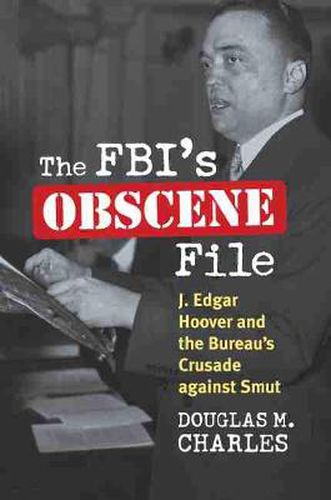Readings Newsletter
Become a Readings Member to make your shopping experience even easier.
Sign in or sign up for free!
You’re not far away from qualifying for FREE standard shipping within Australia
You’ve qualified for FREE standard shipping within Australia
The cart is loading…






What do pop artist Andy Warhol, sex researcher Alfred Kinsey, and cinematic comedians Abbott & Costello have in common? They all found a prominent place in the FBI’s
Obscene File.
In this startling new study Douglas Charles reveals how, for more than seventy years, FBI officials placed obscenity, pornography, and the politics of morality among their topmost concerns.
Illuminating this largely neglected aspect of FBI history, Charles charts the evolution of the Bureau’s efforts to combat the spread of obscenity and its perceived insidious effects. He contends that, especially during the five decades under J. Edgar Hoover, these efforts became a surprisingly high priority and at times expressly wielded for political ends, even as Hoover hid the file from public view in order to preserve the Bureau’s squeaky-clean image.
Charles recounts how the
Obscene File
was conceived and organised by Hoover and describes its contents including magazines, films, and artwork, along with dossiers on offenders. He examines the FBI’s targeting of 1940s and ‘50s
race music
with its depictions of
lewd and licentious acts in obscene and foul language.
He describes how it collected photos of activities at gay bars and prosecuted businesses that published
obscene
pro-gay magazines, as well as participated in the
Lavender Scare
that targeted gays in the federal government. He also details the FBI’s efforts to short-circuit the distribution of the film Deep Throat and disrupt the pornographic movie industry.
On the political front, Charles tells how Hoover found a fellow crusader in Richard Nixon, who hijacked the obscenity issue to rally an electoral base weary of an
anything-goes
decade. But as changing mores and laws redefined obscenity, subsequent directors moved away from Hoover’s approach and focused more on mob control of pornography, kiddie porn, and the war on drugs. Subsequently, the
Obscene File
mostly fell into disuse during the presidencies of Bill Clinton and George W. Bush, the latter president unable to gain any traction with his own obscenity initiatives.
Taking in the whole scope of these operations, Charles’s insightful history offers a previously unseen look at a major facet of FBI activities and contributes significantly to our understanding of Hoover and his legacy.
$9.00 standard shipping within Australia
FREE standard shipping within Australia for orders over $100.00
Express & International shipping calculated at checkout
What do pop artist Andy Warhol, sex researcher Alfred Kinsey, and cinematic comedians Abbott & Costello have in common? They all found a prominent place in the FBI’s
Obscene File.
In this startling new study Douglas Charles reveals how, for more than seventy years, FBI officials placed obscenity, pornography, and the politics of morality among their topmost concerns.
Illuminating this largely neglected aspect of FBI history, Charles charts the evolution of the Bureau’s efforts to combat the spread of obscenity and its perceived insidious effects. He contends that, especially during the five decades under J. Edgar Hoover, these efforts became a surprisingly high priority and at times expressly wielded for political ends, even as Hoover hid the file from public view in order to preserve the Bureau’s squeaky-clean image.
Charles recounts how the
Obscene File
was conceived and organised by Hoover and describes its contents including magazines, films, and artwork, along with dossiers on offenders. He examines the FBI’s targeting of 1940s and ‘50s
race music
with its depictions of
lewd and licentious acts in obscene and foul language.
He describes how it collected photos of activities at gay bars and prosecuted businesses that published
obscene
pro-gay magazines, as well as participated in the
Lavender Scare
that targeted gays in the federal government. He also details the FBI’s efforts to short-circuit the distribution of the film Deep Throat and disrupt the pornographic movie industry.
On the political front, Charles tells how Hoover found a fellow crusader in Richard Nixon, who hijacked the obscenity issue to rally an electoral base weary of an
anything-goes
decade. But as changing mores and laws redefined obscenity, subsequent directors moved away from Hoover’s approach and focused more on mob control of pornography, kiddie porn, and the war on drugs. Subsequently, the
Obscene File
mostly fell into disuse during the presidencies of Bill Clinton and George W. Bush, the latter president unable to gain any traction with his own obscenity initiatives.
Taking in the whole scope of these operations, Charles’s insightful history offers a previously unseen look at a major facet of FBI activities and contributes significantly to our understanding of Hoover and his legacy.